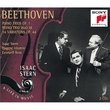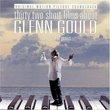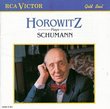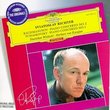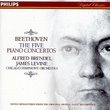| All Artists: Ernest Bloch, Aaron Copland, Paul Hindemith, Alexander Zakin Title: Hindemith, Copland: Violin Sonatas; Bloch: Violin Sonata; Baal shem Members Wishing: 1 Total Copies: 0 Label: Sony Release Date: 4/9/1996 Genre: Classical Styles: Chamber Music, Historical Periods, Modern, 20th, & 21st Century, Instruments, Strings Number of Discs: 1 SwapaCD Credits: 1 UPC: 074646453322 |
Search - Ernest Bloch, Aaron Copland, Paul Hindemith :: Hindemith, Copland: Violin Sonatas; Bloch: Violin Sonata; Baal shem
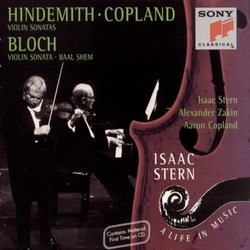 | Ernest Bloch, Aaron Copland, Paul Hindemith Hindemith, Copland: Violin Sonatas; Bloch: Violin Sonata; Baal shem Genre: Classical
Isaac Stern is a devotee of 20th-century music. The most recent piece, Copland's Sonata, is actually the most euphonious. Stern lets its lyrical lines sing, with excellent support from the composer at the piano. The most... more » |
Larger Image |
CD DetailsSynopsis
Amazon.com Isaac Stern is a devotee of 20th-century music. The most recent piece, Copland's Sonata, is actually the most euphonious. Stern lets its lyrical lines sing, with excellent support from the composer at the piano. The most challenging and dramatic piece in the collection is the earliest, the Bloch Sonata, which Stern and Alexander Zakin play with all-out fervor. The Hebraic Baal Shem is one of Bloch's most often heard works, here done with great folk flavor. And Hindemith's prewar neoclassicism never sounds dry in this very knowing performance. In short, this is a great collection of 20th-century violin works that won't give anyone indigestion. --Leslie Gerber Similar CDsSimilarly Requested CDs
|
CD ReviewsA fine collection of 20th century sonatas, played with freed Discophage | France | 05/19/2007 (5 out of 5 stars) "Here is another intelligently conceived collection of sonatas played by Isaac Stern, making up volume 28 of Sony's tribute to the great American violinist. Stern's is joined by his usual partner of those days, Alexander Zakin, and by the composer himself in Copland's sonata. As the liner notes point out, despite their considerable stylistic differences, all three composers have in common to have ended their lives in the United States (both Hindemith and Bloch became naturalized American citizens) and their involvement with teaching (Hindemith at Yale, Bloch at Berkeley and in Cleveland, Copland in New York and Harvard). Hindemith's terse and harmonically grating sonata was recorded as early as 1947, and was one of Stern's first recordings (his first one was Wieniawski's 2nd concerto, made in 1946). He had met the composer who was then in residence at Yale, and they played Beethoven's violin concerto together. Mono sound, a bit dry, with the piano a bit recessed and sometimes lacking harmonics, but violin well defined and surprisingly utterly no surface noise. The Copland sonata, recorded in 1968, was originally part of an all-Copland CBS LP with the Duo for clarinet and piano and Nonet for strings. The composition is pervaded by the serene and wistful mood of Appalachian Springs, but with traces, in the first movement's slow-fast construction and especially in the piano part more radical Copland of the Piano Sonata (written three years before). It is difficult to define what is "American" music - but it is easy to recognize it. The recording has of course the full authority of the composer at the piano. Copland had made an earlier recording, in the last days of 1947 (the piece had been premiered three years before) with Louis Kaufman, and that was briefly made available on CD, in the early 90s, by Bay Cities (BCD 1019, Louis Kaufman plays Piston Violin Concerto No. 1, Copland Violin Sonata). Tempos have broadened in the intervening 15 years - a phenomenon often observed in the history of recorded music in the 20th century - and the later recording benefits from Stern's lusher sound. The prize aspect of Stern's rendition of Ernest Bloch's "Baal Shem: 3 Pictures of Chassidic Life", recorded in 1961, is the violinist's beefy tone and vocal delivery, with husky overtones and a broodingly meditative character: you can fancy being at the Synagogue and hearing the Cantor, making it one of the best recordings I know. The transfer is good, with minimum tape hiss, but too bad Zakin is given the sonic place of an accompanist rather than of an equal partner. Bloch's magnificent 1st Violin and Piano Sonata from 1920 is, in its outer movements, one of the most massively powerful and brutal works written in the form in the first half of the 20th century, equalled only by Bartok's first and some of George Antheil's essays in the genre. Stern and Zakin, in their 1959 recording, hurl into the first movement with hair-raising tension and almost frenzied passion, almost losing control in the process - most conspicuously when Stern enters a bar too early at 5:31, and all three movements are strewn with such little inaccuracies, though they are nothing anybody is likely to perceive without a score (and even then...). Stern displays a fine, beefy tone, abetted by a close recording and transfer cut at high level, but the most remarkable aspect of his interpretation is his willingness not to pull his punches and to apply tremendous bow pressure, roughening and uglifying his tone when needed (just try the beginning), but never at the cost of pitch accuracy. Given the daunting difficulties of the piano part no pianist here could be a mere "accompanist" and Zakin is well up to the piece's technical challenges, but again the recording doesn't fully give him equal position with Stern and his powerful and weighty approach, with chords rung like thunderclaps rather than whiplashes, is not always entirely responsive to the score's invitations for snap and resilience of keyboard attack. The two partners apply much tempo flexibility, significantly broadening the pace in the more lyrical passages, and likewise they take an expansive view of the mysterious and haunting second movement (in which the lyrical theme from the first movement returns), markedly slower than the composer's metronome mark and conjuring echoes of similar movements by Copland or Ives. Stern's harmonics, in the passage starting at 4:15, have an other-worldly purity, but strangely he plays "arco" and "sul ponticello" the passage in sixteenth-notes at 5:01 rather than pizzicato as Bloch indicates - it is true that it sounds better that way. Again the Finale is processed with gusto and beefy tone from Stern, powerful playing from Zakin but somewhat subservient sonic perspective, and an acceleration of tempo at 1:54 that is effective and dramatic but absolutely not indicated in the score. Not then the most precise rendition of Bloch's score, but Stern's gusto and lush tone makes it a winner. " Old school playing violinist | Chicago | 05/11/2001 (4 out of 5 stars) "Isaac Stern gives a fine performance in this recording of the Hindemith, Bloch and Copland sonatas. With the new style of violin playing, it is hard to distinguish individual tehcnique; in the case of Stern, his unmistakable sound adds a charming tone to the sonatas. My favorite track is the first movement of the Copland. He takes some liberty with the specific tempi, but the lyricsm captures the essence of Aaron Copland's music. These older recordings are vital to the early 20th century rep, as they accurately display the individual composer's intents. The sound quality is lacking slightly due to the date of recording, but Sony does a good job in remastering the recording and editing studio noise." Copland's Simplicity OC | 10/26/2004 (4 out of 5 stars) "I ran across the Copland sonata and this performance in the early 1970s. I was ambivalent about chamber music at the time, but the beauty of the piece won me over. The stark simplicity of the second movement was unlike anything I had heard before. The climax of the final movement echoes Appalachian Spring in mood but the triumph in the sonata seems somehow harder won.
The Hindemith and the Bloch (particularly the Bloch) are well worth hearing, too. The CD either reveals a bit of the original's sonic limitations or wasn't done perfectly. You don't notice after the first 10 seconds, but that's the reason I only rate this 4 stars." |

 Track Listings (12) - Disc #1
Track Listings (12) - Disc #1
